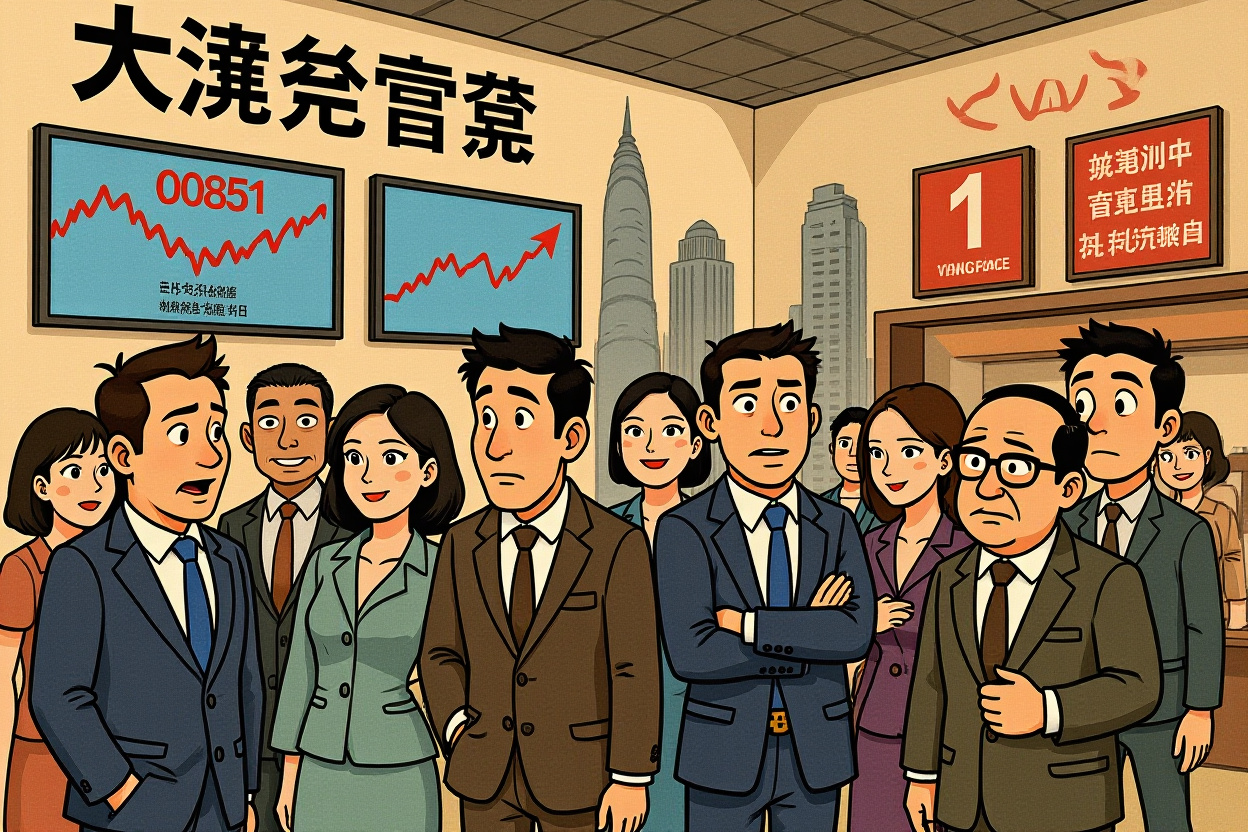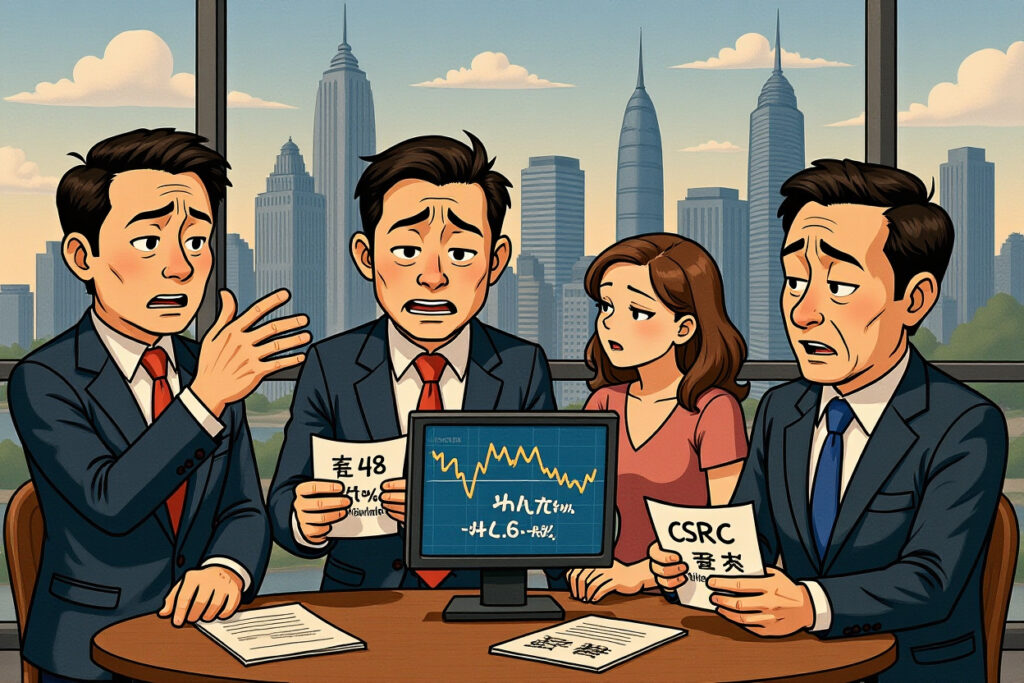• Gaoke Petrochemical Co., Ltd. (高科石化, 000851) has officially entered face value delisting procedures after 20 consecutive trading days closing below 1 yuan
• This marks the first face value delisting on Shenzhen Stock Exchange in 2024, signaling strengthened regulatory enforcement
• Retail investors face significant losses with limited exit opportunities during the 15-day delisting consolidation period
• The delisting reflects broader regulatory trends toward market cleanup and quality improvement in Chinese equities
Chinese equity markets witnessed another significant regulatory enforcement action as Gaoke Petrochemical Co., Ltd. (高科石化股份有限公司, 000851.SZ) triggered mandatory face value delisting provisions after maintaining a share price below 1 yuan for 20 consecutive trading sessions. This development represents a critical case study in China’s ongoing campaign to improve market quality through the elimination of underperforming listed companies.
Regulatory Framework for Face Value Delisting
The face value delisting mechanism represents a key component of China’s securities market reform agenda. According to Shenzhen Stock Exchange (深圳证券交易所) rules, any main board company closing below 1 yuan for 20 consecutive trading days automatically triggers delisting procedures without a grace period or hearing process.
Specific Trigger Conditions
Gaoke Petrochemical’s situation exemplifies the precise conditions that mandate face value delisting:
– Daily closing price remained below 1 yuan for 20 consecutive trading days
– No trading suspensions occurred during this period that would reset the counter
– The company failed to implement effective measures to boost shareholder confidence
– Market sentiment remained persistently negative despite sector recovery
Company-Specific Factors Leading to Delisting
Gaoke Petrochemical’s journey toward face value delisting reflects both company-specific challenges and broader sectoral headwinds. The petroleum processing specialist faced multiple operational and financial difficulties that eroded investor confidence.
Financial Performance Deterioration
The company’s fundamental deterioration became increasingly apparent through several key indicators:
– Revenue declined 38.7% year-over-year in latest quarterly reporting
– Net losses expanded to 287 million yuan amid refining margin compression
– Debt-to-asset ratio reached 78.3%, limiting financial flexibility
– Operating cash flow turned negative for three consecutive quarters
Market Mechanisms and Investor Impact
The face value delisting process involves specific market mechanisms that significantly impact existing shareholders. Understanding these procedures is crucial for investors holding positions in similarly positioned companies.
Trading Arrangements During Delisting Process
Following the delisting trigger, Gaoke Petrochemical entered a structured exit process:
– 15-day consolidation period for remaining investor exit opportunities
– Trading suspension pending delisting approval from exchange authorities
– Transition to over-the-counter trading on the Third Board (三板市场) anticipated
– Shareholder voting rights remain during the transition period
Broader Market Implications
This face value delisting event carries significant implications for the broader Chinese equity markets. Regulatory authorities have clearly demonstrated reduced tolerance for underperforming listed companies regardless of sector or ownership structure.
Regulatory Enforcement Trends
The China Securities Regulatory Commission (中国证券监督管理委员会, CSRC) has increasingly emphasized market quality improvements:
– 47 companies delisted via various mechanisms in 2023, a 118% increase from 2022
– Face value delistings accounted for 58% of all compulsory delistings last year
– Regulatory guidance encouraging voluntary delistings for chronically underperforming companies
– Stricter listing standards reducing new problematic listings
Investor Protection Considerations
The face value delisting process raises important investor protection questions, particularly regarding retail investor vulnerability. Many individual investors face substantial losses with limited recourse options.
Risk Mitigation Strategies</h3
Sophisticated institutional investors typically employ several protective strategies:
– Automated selling triggers when stocks approach 1.20 yuan threshold
– Reduced position sizes in companies with market capitalization below 3 billion yuan
– Enhanced due diligence on companies with consecutive quarterly losses
– Avoiding stocks with high retail investor concentration percentages
Sector-Wide Impact and Contagion Risk
Gaoke Petrochemical’s delisting has particular resonance within the energy sector, where multiple companies face similar financial pressures. The petroleum processing industry specifically faces structural challenges beyond cyclical factors.
Industry-Specific Pressures
The petroleum processing sector confronts several existential threats:
– National carbon neutrality goals reducing long-term demand projections
– Oversupply conditions depressing refining margins industry-wide
– Rising compliance costs for environmental standards
– Competition from integrated petrochemical giants with scale advantages
This face value delisting event serves as a stark reminder that regulatory authorities continue prioritizing market quality over quantity. Investors must recognize that the CSRC’s tolerance for underperforming listed companies has substantially diminished. The days of speculative trading in fundamentally unsound companies based on restructuring hopes or government bailout expectations are rapidly ending.
Professional investors should review their screening methodologies to automatically exclude companies approaching face value delisting thresholds. Enhanced due diligence around financial health indicators, particularly debt maturity profiles and cash flow sustainability, becomes increasingly crucial. The Gaoke Petrochemical case demonstrates that once a company enters the face value delisting danger zone, recovery becomes statistically improbable despite occasional temporary bounces.
Market participants should monitor the Shenzhen Stock Exchange’s official announcement channel for updates on delisting procedures and subsequent over-the-counter trading arrangements. Investors holding positions in similarly situated companies should immediately consult with their compliance departments and risk management teams to develop exit strategies before liquidity completely evaporates.




